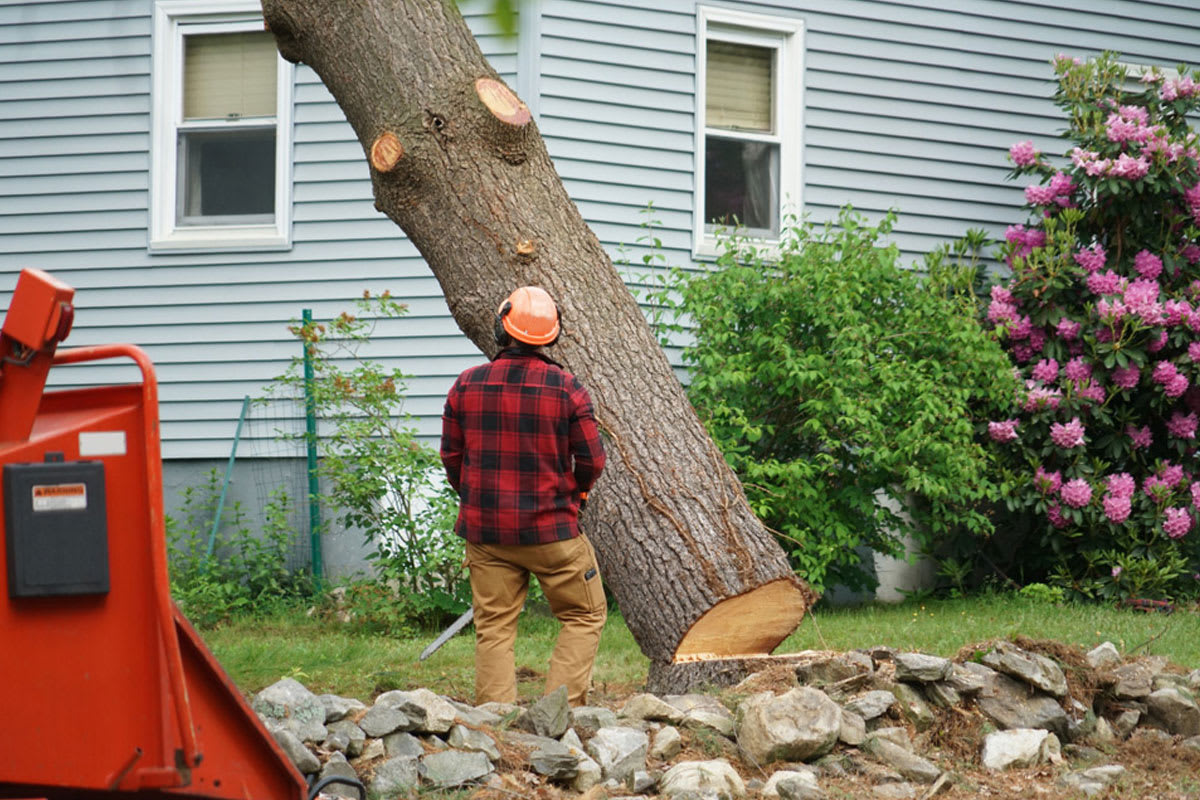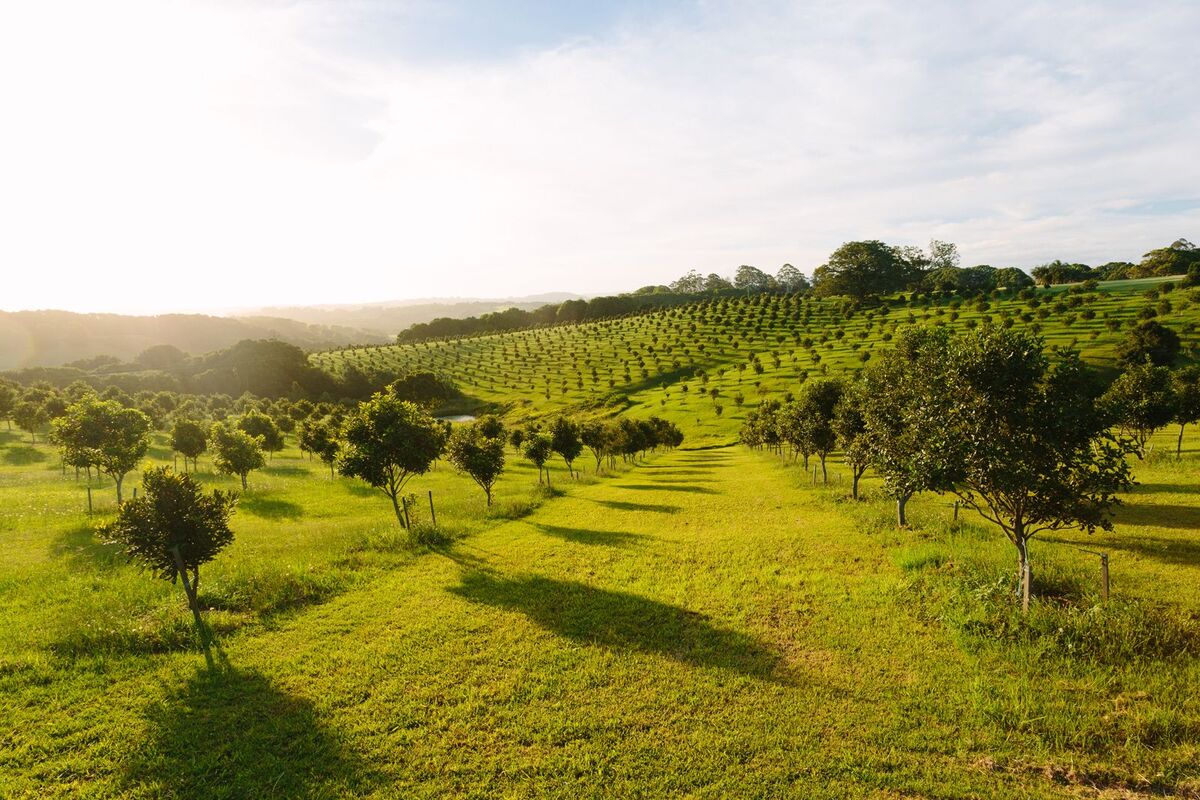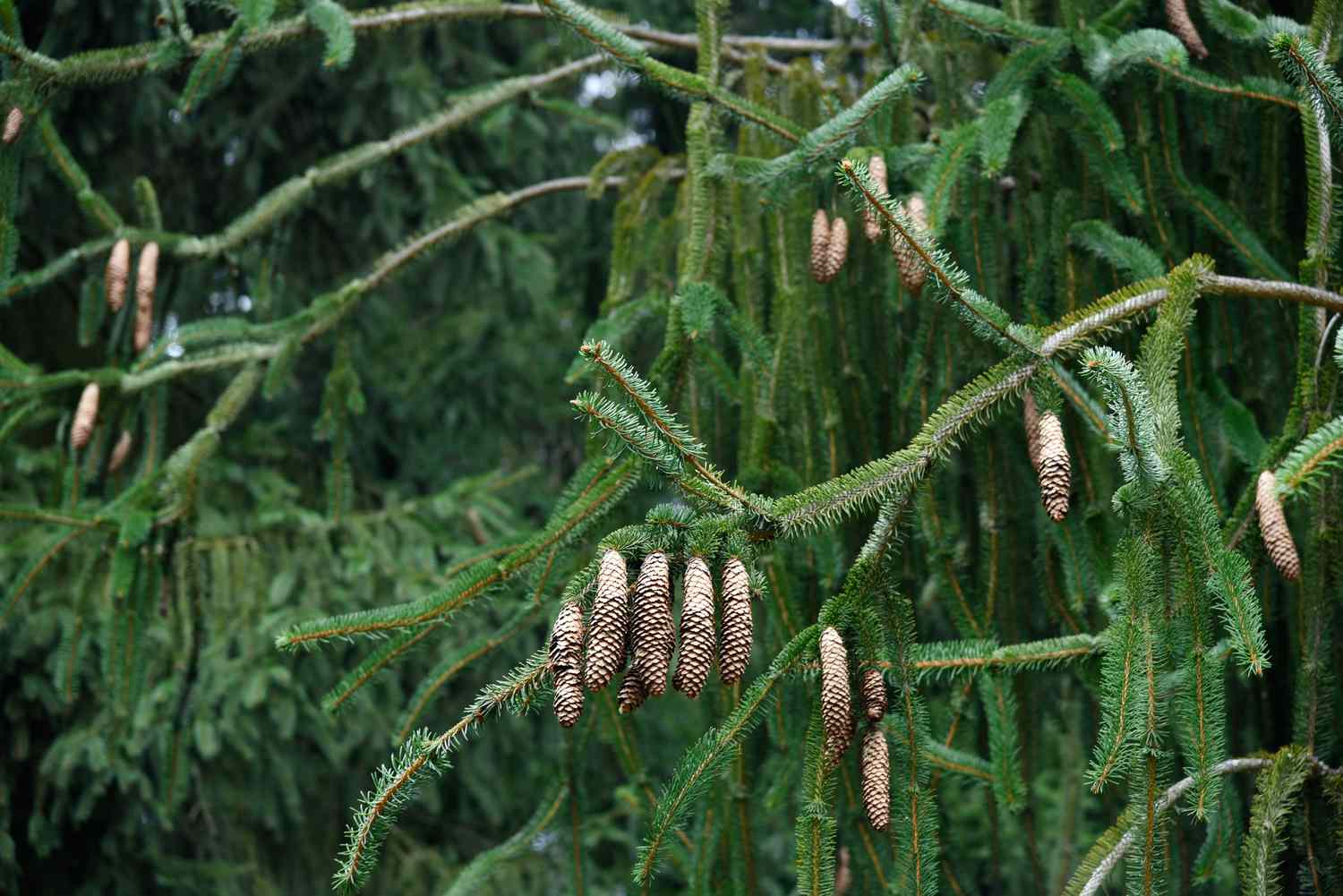Home>Gardening News and Trends>Latest News>How Long Have Trees Been Around


Latest News
How Long Have Trees Been Around
Modified: February 8, 2024
Stay updated with the latest news on how long trees have been around. Discover fascinating facts and insights into the ancient history of these majestic beings.
(Many of the links in this article redirect to a specific reviewed product. Your purchase of these products through affiliate links helps to generate commission for Chicagolandgardening.com, at no extra cost. Learn more)
Table of Contents
Introduction
Trees are an integral part of our natural environment and have been a dominant presence on Earth for millions of years. Their significance extends beyond their aesthetic beauty, serving as vital components of ecosystems and playing a crucial role in maintaining the balance of our planet’s climate. Understanding the origins and evolution of trees provides valuable insights into the history of life on Earth.
Throughout history, trees have captivated human imagination, inspiring legends, religious beliefs, and artistic expressions. They have been a source of shelter, food, and materials for human civilizations, as well as a symbol of strength, resilience, and interconnectedness.
In this article, we will delve into the fascinating history of trees, tracing their origins, exploring their evolutionary journey, and examining their impact on Earth’s ecosystems. We will also discuss the longevity of trees and their enduring presence in the face of the ever-changing natural world.
By gaining a deeper understanding of trees and their historical significance, we can develop a greater appreciation for their role in sustaining life on our planet and recognize our responsibility to protect and conserve these magnificent organisms for future generations.
The Origins of Trees
Trees have a long and mysterious history, stretching back millions of years to the early days of life on Earth. The evolution of trees can be traced to a group of ancient plants known as vascular plants, which emerged around 400 million years ago during the Late Silurian period.
Before the appearance of trees, the Earth’s landscape was dominated by primitive plants like algae and mosses. The transition to tree-like forms signaled a significant milestone in the diversification of plant life. These early trees, known as ‘prototrees,’ were relatively small in size, compared to the immense counterparts we are familiar with today.
One of the first tree-like organisms to emerge was the Archaeopteris, a tree that grew to be over 30 meters tall and possessed a woody trunk. This ancient tree played a crucial role in the evolution and development of modern forests. It is considered to be the ancestor of many tree species that exist today.
Over time, the early prototrees underwent further adaptations, giving rise to new forms and species. This evolutionary process led to the development of various tree types, including conifers, ferns, and flowering plants. Each tree type possesses unique characteristics that enable it to thrive in diverse geographical regions and adapt to different climates and environments.
The evolution of trees not only ushered in a new era of plant life on Earth but also had profound effects on the surrounding environment. Trees played a crucial role in shaping the Earth’s climate, atmospheric composition, and habitats for other organisms. They provided shelter, food, and protection to countless species, forming complex ecosystems and promoting biodiversity.
Understanding the origins of trees allows us to appreciate the intricacies of life’s evolutionary journey and highlights the interconnectivity of all living organisms. Trees are not mere bystanders in the story of life on Earth; they are key actors that have shaped the planet’s history and continue to play a critical role in its future.
Early Tree-Like Organisms
Before the emergence of modern trees, the Earth was inhabited by various early tree-like organisms that can be considered ancestral to the trees we know today. These ancient organisms played a fundamental role in paving the way for the development of complex forests and ecosystems.
One notable example of early tree-like organisms is the Lycopsids, which first appeared around 400 million years ago during the Devonian period. Lycopsids, also known as club mosses, were the dominant group of plants during this time. They could reach impressive heights of up to 30 meters and possessed a central trunk-like structure, suggesting an arboreal lifestyle.
Another group of early tree-like organisms was the Sphenopsids, commonly known as horsetails. These plants had a unique jointed stem and were equipped with leaves that resembled needles. Although they were smaller than the Lycopsids, reaching heights of around 10 meters, their presence indicated the diversification of tree-like forms in the evolutionary timeline.
During the Carboniferous period, around 360 to 300 million years ago, a group of plants called the Ferns began to dominate the landscape, further expanding the diversity of early tree-like organisms. Ferns are characterized by their frond-like leaves and the ability to reproduce through spores. Some ancient ferns, such as the Ludlowia, reached towering heights, resembling modern-day tree ferns.
These early tree-like organisms played a crucial role in shaping the Earth’s ecosystems. Their towering presence provided habitats and shelter for various species, including insects, small reptiles, and early amphibians. They also contributed to the accumulation of organic matter, which later transformed into the coal deposits that we use as an energy source today.
Studying these early tree-like organisms not only sheds light on the evolutionary path that led to the development of modern trees but also highlights the interconnectedness of living organisms and their impact on the environment. The ancestors of the trees we see today laid the foundation for the intricate ecosystems we depend on, underscoring the importance of conserving and protecting these vital natural resources.
Evolution of Modern Trees
The evolution of trees has been a dynamic and complex process that has spanned millions of years. From the humble beginnings of early tree-like organisms to the diverse and majestic trees we see today, their evolution is a testament to the adaptability and resilience of life on Earth.
One of the major milestones in the evolution of modern trees was the emergence of gymnosperms, a group of seed-producing plants that includes conifers. Gymnosperms first appeared around 300 million years ago during the Carboniferous period and quickly diversified, dominating the landscape during the Mesozoic era.
Conifers, such as pines, spruces, and firs, are characterized by their needle-like leaves and the production of cones that house their seeds. This adaptation allowed them to reproduce more efficiently and facilitated their spread across various climates and continents. They played a crucial role in the formation of vast forests, shaping the Earth’s ecosystems and influencing the climate.
Another significant development in the evolution of modern trees was the rise of angiosperms, or flowering plants, during the Cretaceous period, approximately 125 million years ago. Angiosperms brought forth a new level of diversity and complexity in tree forms and reproductive strategies. They not only produced seeds but also developed flowers that attracted pollinators, increasing their chances of successful reproduction.
The emergence of angiosperms led to the widespread diversification of tree species we see today, ranging from towering oaks and maples to delicate cherry blossoms and vibrant tropical trees. Their ability to adapt to different habitats and climates allowed them to colonize diverse ecosystems, further shaping the natural world.
The evolution of modern trees also involved various adaptations to survive and thrive in changing environments. The development of sturdy trunks, extensive root systems, and efficient water transport mechanisms enabled trees to grow taller and stronger, capturing sunlight and nutrients more effectively.
The coevolution between trees and other organisms, such as insects and animals, has also been a driving force in their evolution. Some trees developed mutualistic relationships with specific animal pollinators or seed dispersers, ensuring their reproductive success and continued evolution.
The intricate and ongoing evolution of modern trees has shaped our natural world in profound ways. They continue to play a vital role in the Earth’s ecosystems, providing us with oxygen, carbon sequestration, and habitat for countless species. Understanding their evolution helps us appreciate the complexity of life and underscores the importance of preserving and safeguarding these remarkable organisms for future generations.
The Impact of Trees on Earth’s History
Trees have left an indelible mark on Earth’s history and have played a significant role in shaping the planet’s evolution. Their impact can be observed in various aspects of our natural world, from the climate to the ecosystems they support.
One of the most prominent contributions of trees to Earth’s history is their role in regulating the planet’s climate. Through the process of photosynthesis, trees absorb carbon dioxide from the atmosphere, converting it into oxygen and organic matter. This crucial process helps to mitigate the greenhouse effect and reduce the levels of carbon dioxide, thereby stabilizing the Earth’s climate.
In addition to regulating the climate, trees also play a crucial role in maintaining the water cycle. Through their complex root systems, trees absorb water from the ground and release it into the atmosphere through a process known as transpiration. This moisture contributes to the formation of clouds and rainfall, helping to sustain ecosystems and provide freshwater sources for countless organisms, including humans.
Furthermore, trees have shaped the landscapes and habitats that we see today. Their roots help prevent soil erosion and stabilize slopes, reducing the risk of landslides and maintaining the integrity of ecosystems. The canopy formed by the branches and leaves provides shade and shelter for a wide variety of species, fostering biodiversity and creating microhabitats within forests.
Trees have also had a significant impact on human history and development. Since ancient times, humans have relied on trees for a multitude of resources. Trees provided us with timber for construction, firewood for heat and cooking, and various plant materials for crafting tools, clothing, and shelter. Even today, forests continue to sustain livelihoods and economies through industries such as logging and sustainable forestry.
Furthermore, the beauty and serenity of forests have inspired artists, writers, and explorers throughout history. Trees have been symbols of strength, wisdom, and spiritual connection in various cultures and belief systems. They have sparked human imagination and provided solace in the face of adversity, serving as a reminder of the interconnectedness between humans and nature.
Recognizing and understanding the impact of trees on Earth’s history allows us to appreciate their intricate role in maintaining the delicate balance of our planet. Preserving forests and adopting sustainable practices is vital not only for the well-being of ecosystems but also for the future of humanity. By protecting trees and their habitats, we contribute to the preservation of Earth’s history and ensure a sustainable future for generations to come.
Longevity of Trees
Trees are known for their remarkable longevity, often outliving many other living organisms on Earth. Some tree species have been standing tall for hundreds, if not thousands, of years, bearing witness to the passage of time and the changes in their surroundings.
One example of an incredibly long-lived tree is the famous bristlecone pine (Pinus longaeva). Found in the United States, these ancient trees can live for thousands of years, with some individuals estimated to be over 5,000 years old. These trees have survived harsh conditions, including extreme temperatures, arid climates, and rocky terrains.
The sequoias of California, including the giant sequoia (Sequoiadendron giganteum) and the coast redwood (Sequoia sempervirens), are also known for their exceptional longevity. Some of these majestic trees have been found to be over 3,000 years old, making them some of the oldest living organisms on the planet.
One intriguing aspect of the longevity of trees is their ability to continuously grow and regenerate. Unlike most animals, trees do not have a fixed lifespan. Instead, they have the potential to keep growing and adapting as long as they are healthy and provided with the necessary resources.
The longevity of trees can be attributed to several factors. One key factor is the presence of a specialized conductive tissue called cambium, which allows for the continuous growth of new cells in the trunk, branches, and roots. The protective bark of trees also aids in their survival, shielding them from environmental stressors, diseases, and pests.
Additionally, trees have developed various mechanisms to survive adverse conditions and ensure their longevity. Some trees have adapted to withstand fire, droughts, and freezing temperatures, while others have established symbiotic relationships with beneficial fungi that enhance their resilience.
The longevity of trees holds immense ecological value. Old-growth forests, comprising ancient trees, provide unique habitats for numerous species and are rich in biodiversity. These forests contribute to carbon sequestration and play a vital role in mitigating the effects of climate change.
Appreciating the longevity of trees reminds us of the importance of protecting and conserving these ancient organisms. Preserving old-growth forests and implementing sustainable practices will ensure that future generations can continue to marvel at these living monuments and benefit from the ecological services they provide.
Human Interaction with Trees
Trees have played a significant role in human history and have been intertwined with our development as a species. Throughout the ages, humans have interacted with trees in various ways, recognizing their importance and utilizing their resources for a multitude of purposes.
One of the earliest interactions between humans and trees was the discovery of their use as a source of shelter. Ancient humans sought refuge under the canopy of trees, taking advantage of their branches and leaves for protection against the elements.
As civilizations evolved, so did our interaction with trees. Early human settlements relied on trees for their construction materials. Wood from trees provided the necessary resources to build homes, tools, and other essential structures. The invention of tools like axes and saws further facilitated the extraction of wood from trees and allowed for more complex woodworking techniques.
Trees have also been critical sources of food and sustenance for humans throughout history. Fruit-bearing trees provided a readily available source of nutrition, while nuts and seeds from trees contributed to the early development of agriculture. Tree sap was harvested for its sugary content and used as a sweetening agent. Moreover, the bark of certain tree species was utilized for medicinal purposes, treating various ailments and injuries.
Throughout many cultures, trees hold significant spiritual and cultural value. Trees were often considered sacred or mythical, revered as symbols of life, wisdom, and continuity. They became spiritual centers for rituals, ceremonies, and gatherings, fostering a deep connection between humans and the natural world.
The industrial revolution marked a turning point in human interaction with trees. The demand for timber increased exponentially as logging and deforestation became industrialized processes. Forests were cleared to make way for agriculture, commerce, and urbanization, leading to widespread deforestation and the loss of valuable ecosystems.
Recognizing the impact of deforestation and the importance of preserving trees, conservation efforts have emerged in recent years. Reforestation programs, sustainable forestry practices, and protected areas have been established to mitigate the negative consequences of human activities on tree populations and their surrounding ecosystems.
Today, the awareness of the value of trees has grown, and efforts to protect and restore forests are more prevalent than ever. People are becoming more conscious of the benefits of trees, such as carbon sequestration, air purification, and the conservation of biodiversity. Furthermore, sustainable practices such as tree planting initiatives, agroforestry, and urban greening projects are gaining traction, recognizing the vital role that trees play in maintaining a healthy and balanced environment.
Human interaction with trees is an ongoing journey that spans thousands of years. As we continue to understand the significance of trees in our lives, it is crucial that we strive to establish a harmonious relationship with them, valuing their ecological importance, preserving their habitats, and appreciating their beauty and resilience.
Conclusion
The history and significance of trees on Earth are awe-inspiring. From their ancient origins to their impact on the environment and human civilizations, trees have shaped the course of our planet’s history. Understanding their evolution, longevity, and the human connection with them deepens our appreciation for these magnificent organisms.
Trees have been instrumental in regulating the climate, maintaining the water cycle, and supporting biodiverse ecosystems. Their ability to capture carbon dioxide, release oxygen, and provide habitats for countless species underscores their vital role in sustaining life on Earth. As guardians of biodiversity, they safeguard our planet’s natural heritage.
Human interaction with trees has been extensive, from using wood for shelter and fuel to recognizing their cultural and spiritual significance. However, our relationship with trees has not always been harmonious. Deforestation, driven by industrialization and urbanization, has led to the destruction of vast forested areas and threatened the delicate balance of ecosystems.
Fortunately, there is a growing awareness of the importance of trees and the need to protect and restore them. Reforestation initiatives, sustainable forestry practices, and conservation efforts are aimed at preserving and regenerating forests for future generations. The recognition of trees as vital allies in combating climate change and mitigating environmental degradation is gaining momentum.
In conclusion, trees have a rich and complex history that spans millions of years. Their endurance, adaptability, and invaluable contributions to the planet cannot be overstated. By fostering a deep appreciation and understanding of trees, and by taking action to protect and preserve them, we can contribute to the health and sustainability of our planet for generations to come.









